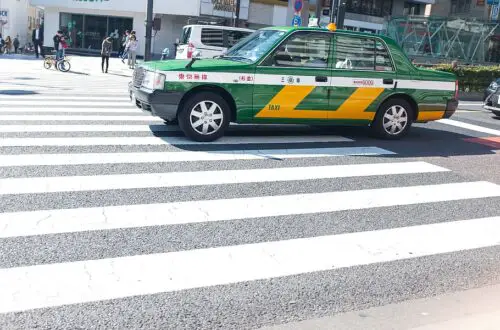
Is Japan Humid? a Detailed Overview to Avoid the Heat in Japan
Japan is an island country. Due to its proximity to the sea, humidity is expected. But how humid Japan really is?
Japan has different weather in different regions. But, generally speaking, it is quite humid during the summer and the rainy season. This means you can feel the humidity in Japan from May to October. The humidity spikes in June, July, and August.
Japan stretches from the Hokkaido islands in the north to Okinawa in the south and has different weather in different regions. The Pacific Ocean is at its east coast while the west coast has the Sea of Japan. Here is all you need to know about Japan’s weather and particularly about the humidity you experience in this country if you are planning a trip.
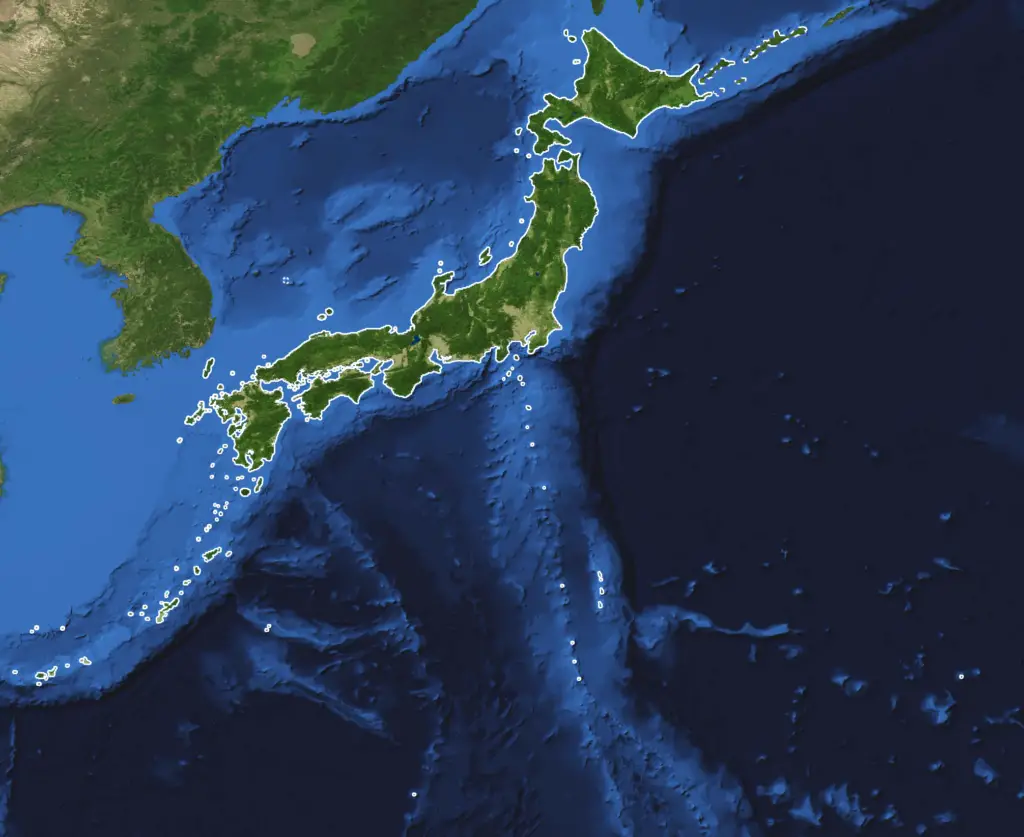
Ready to explore further? Visit the full Japan Travel Guide for routes, destinations, and essential travel advice.
Weather in Japan
Japan has four distinct seasons – Winter, Spring, Summer, and Autumn. The rains come in after the spring. Humidity is most prominent between June and September. May and October are mostly pleasant, even though some areas of Japan, where rain is expected, can be a little humid.
Summers in Japan are hot and humid. While the temperature does not rise too high in summer, the weather is quite warm. Combined with the humidity that is present due to the proximity to the ocean, the weather can become sweltering.
Here is a month-wise take on Japan’s weather.

The above data is based on average relative humidity and the average temperature in Japan each month. Below is a detailed analysis of the weather.
Japan’s geography is such that different regions have different weather conditions. So the below analysis also shows the maximum and minimum temperature and average precipitation in three regions – Sapporo, Tokyo, and Okinawa to give you a glimpse of how the weather conditions are different in the northern, central, and southern regions of Japan. The data has been collected from 1981-2010 by the Japan Meteorological Agency and the numbers are still relevant. The color coding is as below:
Green – Pleasant, no humidity
Light Green – Comfortable with little humidity
Yellow – Humid, but comfortable
Light Red – Humid
Red – Very Humid
The colors have been used to reflect how the weather conditions are in each month in the three regions. The level of comfort depends on the humidity and the temperature. Humidity in already warm weather makes it hotter.
May in Japan – mostly pleasant!
Rainy season can begin in late May and the weather can become a little humid. But overall, May is quite pleasant all over Japan.

June in Japan – grey and humid
June is the beginning of the rainy season in many regions of Japan. Rain brings with it humidity, too. But the heat and humidity are not too severe and quite tolerable. Hokkaido is the place where the chances of rain are very less. June is characterized by grey, humid weather.

July in Japan – humidity continues to rise
July has an average high temperature of 80 degrees Fahrenheit and low of about 70 degrees Fahrenheit in Tokyo. When it’s July in Japan, the rainy season has not completely ended. This means you can expect rain and also a lot of humidity. The rains can continue until the end of July and are intermittent but can be heavy at times.

The rain starts early in Okinawa. Hence, it is possible to have rain-free days here by the time it’s July. Similarly, Honshu has an early rainy season, so you will see reduced rainfall in this region, too. As you move north towards Hokkaido, there are chances of more rainfall.
Even in regions where it is raining during July, the weather is mostly hot and humid. But since this is also the time for local festivals in Japan, bearing a little heat to soak in the Japanese culture can be a good idea.
“I have never, ever been in a climate more stiflingly uncomfortable than Japan in the summer. I feel chilly when I visit the mid-west in July...”
A traveler on Japan’s humidity in July.
August in Japan – stifling humidity
August is infamous for being the hottest month in Japan. The average temperature is similar to July but expect the weather to be warmer by a couple of degrees. But what makes this month the hottest is the extreme humidity. A 30-minute leisurely walk through the streets of Japan during the day can drench you in sweat.

Travelers can find the heat in August stifling, or maybe even worse.
“You sit, you sweat. You walk, you sweat. You talk, you sweat. Life in Tokyo in August is a hot sauna. Stifling is a mild word.”
A traveler on Tokyo’s weather in August.
August is also the typhoon season in Japan. This is the month of unexpected downpours and sporadic strong winds. It is advisable to carry an umbrella with you when you step out. This is also the month of summer vacations for schools. This means there are a lot of events all over Japan and it is quite crowded, too. So if you can bear the heat and brave the occasional rainfall, it is a good time to be out and about.
September in Japan – low humidity
The temperature in September is still indicative of summer with a high of 80 degrees Fahrenheit and low of 70 degrees Fahrenheit. However, it is the beginning of the autumn season and you will find the warmth to be much more bearable. Since the typhoon season from August continues in September, some parts of Japan see rains in this month and for places like Sapporo, this can be the rainiest month of the year.

The humidity is markedly less, making it a good month for venturing outdoors.
October in Japan – humidity on the decline
October is the autumn season in most regions of Japan. You can see the leaves turning during this season. It is also very popular for tourism and is one of the best months to visit Japan and experience its beauty. October is a mild month with low humidity and heat.

The rest of the months from November to April are dry with humidity on the lower side. Check out if visiting Japan during January is a good idea – Visiting Japan in January: Is It Worth It?
The reason behind the uncomfortable humidity in Japan

Japan’s weather can be comparable to Malaysia on most days. If only temperature ranges are considered, one could even say that the temperature in Japan is comparable to the temperature in Washington DC. So why is it that Japan feels so uncomfortable?
The primary reason for feeling uncomfortable is not the temperature rise. It’s an increase in humidity. This is exactly why the weather in Washington DC or Malaysia might feel much better even though they have the same temperature as Tokyo.
The comfort level is based on the dew point. If you sweat, the dew point tells you how quickly the sweat will evaporate from the surface of your skin and cool your body. According to dew point calculations, some regions of Japan, especially southern and central Japan experience uncomfortably humid weather.
For instance, in Tokyo, the feeling of mugginess can spike in August to the point that 91% time of the day, the humidity is uncomfortably high.
Whether you can tolerate the humidity also depends on what climatic conditions you are used to. People coming even from a warm country like Australia might feel that the humidity is too much in summers and during the rains. But if you are from a place that is wetter than Japan, you might be able to handle the weather much better.
How to dress to cope with the humidity?

The humidity and heat during summers can be stifling. People new in Japan can find this heat extremely uncomfortable. But dressing appropriately can bring some amount of relief. Wear light, loose, and airy clothes during summers.

In urban areas of Japan, wearing shorts and short skirts for women is considered appropriate. It’s only as you move towards the rural areas, covering up a little is considered culturally more appropriate. Also, if you are planning to visit any temples or shrines, avoid shorts and sleeveless tops and opt for something more conservative.
Short-sleeved shirts, one-piece dresses, shorts, and skirts in breathable cotton fabric are a good choice for women. Men can wear cotton shorts or trousers according to their comfort.
If you are going to spend time outdoors, it is advisable to have a wide-brim hat for protection against the ultraviolet rays from the sun. The hat also helps avoid sunburns. You should also apply a UV blocking sunscreen cream or lotion on all exposed body parts.
Be prepared for indoor air conditioning
While traveling in Japan, you also need to consider the air conditioning that is on in offices, shopping malls, trains, taxis, etc. Sometimes, to beat the heat outside, the temperature is turned down so much that it’s a heat shock when you enter a building from the outside heat. This can be the reason for summer colds. To protect yourself from freezing, carry a long-sleeved cardigan or a jacket with you. Or you could keep a scarf with you.
The right footwear can help
If you are in the busy parts of Japan such as the Tokyo region, expect to walk through the streets a lot. Hence light sneakers are an ideal choice when it comes to footwear. If you don’t expect to walk much, open sandals or any footwear that lets your feet breathe can be a good option.
Other precautions to cope with the heat
The summer sun can be quite harsh. Make sure you keep yourself hydrated by drinking water regularly. Since there are vending machines with water bottles all over Japan, it is quite convenient to buy water. You don’t need to carry bottles of water with you every time you step out.

Japanese fans are easy to get everywhere in Japan. They are distributed as advertisements at train stations or store exits. These come in quite handy to keep yourself cool in the heat. You can also wrap a hand towel around an ice pack and place it on the nape of your neck. This helps to keep your body from overheating.
If you are using air conditioning in the house or in a hotel room, switching on the fan along with the air conditioner is a good option. This way, you can keep the temperature at a reasonable level and let the fan circulate the surrounding air to feel comfortable indoors.
Since Japan’s rain is often heavy yet unexpected, it is advised to carry an umbrella during months when there is a chance of rain. Do check the weather forecast before planning your day.
Food to eat during the hot and humid weather
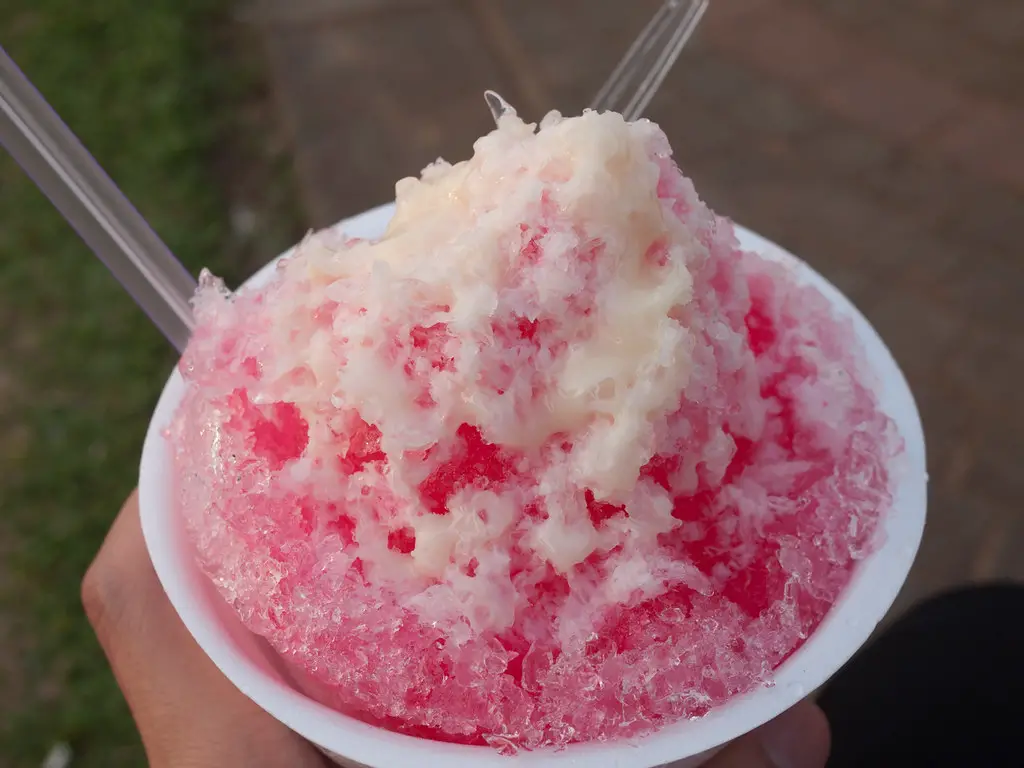
If you are not familiar with the term natsubate, it means ‘summer fatigue’ in Japanese. And natsubate is a real thing. With the hot and humid weather, lethargy can set in. It can be accompanied by tiredness, reduced concentration levels, and even sleeplessness in some cases.
But don’t let the humidity get you. There are some foods that you can try to get your energy levels up and enjoy in Japan even during the most sweltering heat.
Cold foods are an obvious choice to beat the heat. Kakigori, which is shaved ice topped with syrup, is a popular food choice. Other foods include cold noodles and iced tea made with roasted barley known as mugicha. Also, cold beer can come to rescue to cool things down a bit.
However, be aware that these foods, even though popular in summer, can be counter-productive if you choose only to have these foods and beverages. What you need is food that can help you combat nastubate. You need foods that also provide nourishment.
Foods that cool the body while they also provide essential nutrients are fish, particularly two types of fish that are high in Omega-A oils. They are Unagi (eel) and Dojo (loach). Black beans and eggplant are also eaten to keep the energy up.
A few tips for eating right in the humid weather
- Don’t shirk from hot foods. Hot soups and tea such as miso soup can make you feel hot, but they really help.
- Vegetables and fruit high in water content are a great choice. Snack on cucumbers and different types of melons. Have foods with eggplants, zucchini, and other veggies.
- If you face a loss of appetite, lemon and vinegar can help. Have salads dressed in vinegar and lemon.
- Ginger and spicy foods can feel like bad choices in the heat. But at least one meal laced with ginger can work to improve your blood circulation and help you feel a lot better.
- Even though cold noodles dipped in a cold soup can feel a better choice, opt for at least one hot meal in a day.
Places to visit when the weather is hot and humid
Even though the summer heat in Japan is sweltering, not all parts of Japan are uncomfortable during this time. Below is a list of some places you can visit in Japan during the hot summer and escape the heat.
Mt. Fuji
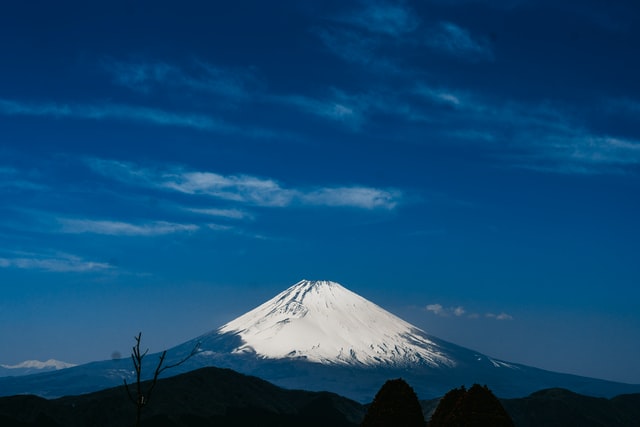
Mt. Fuji, the 3,776 meter high mountain, is a very popular destination during the summer. The mountain trail is open for climbers from July to September. But be advised that the trail can be very crowded during this time, especially on weekends and on public holidays. So it would be a good idea to plan ahead and visit Mt. Fuji with plenty of time on hand.
You can take the Keio Express bus service from Shinjuku in Tokyo. Or you could take the train to reach the foot of the mountain.
Nikko
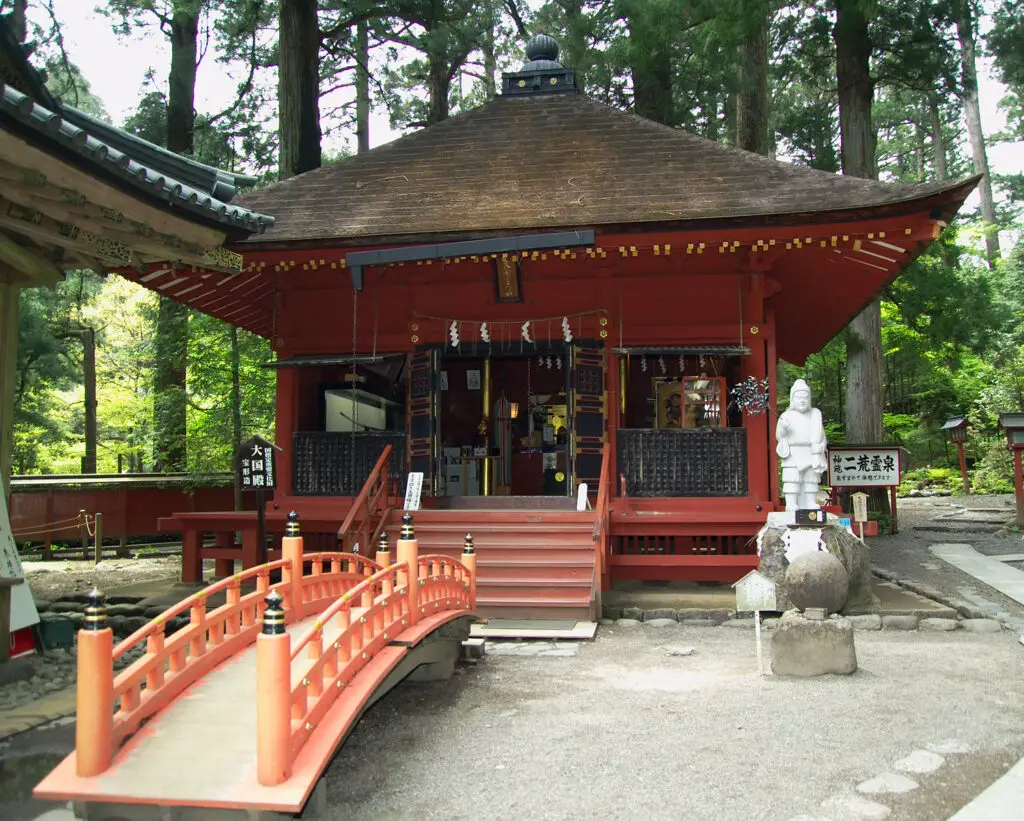
Nikko is known for its cool climate even during the hot summers. But it is more famous for its breathtaking natural beauty and history. It has been a popular destination for summer resorts ever since the Meiji era (1868-1912). It is also known for world heritage sites such as the Rinnoji Temple and Nikko Futarasan Shrine. Attractions also include Chuzenji Lake and Senjogahara Wetlands.
Since this is a well-known destination for a relaxing summer vacation, planning ahead is a good idea. There are a lot of options available for accommodation including some hotels that have been built over a hundred years ago. You can reach Nikko by train from Tokyo in about two hours.
Karuizawa
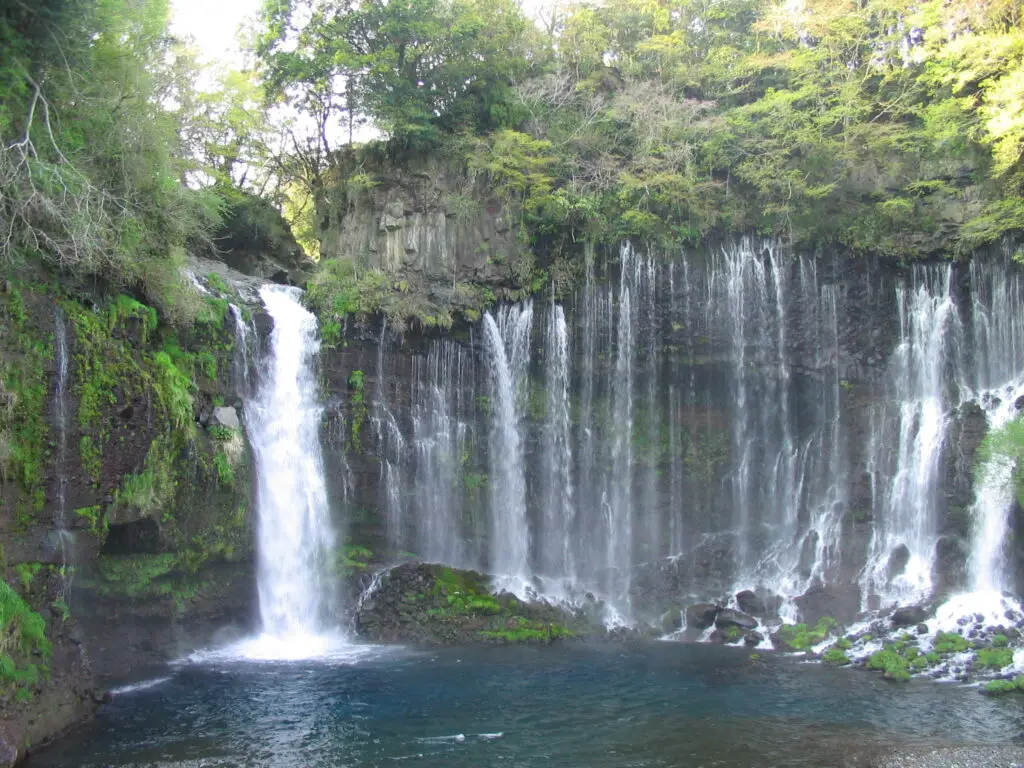
It is said that if you ask a Japanese to tell you the best summer destination, Karuizawa will be their first recommendation. It is located in the midst of lush green forests at a high altitude away from the buzz of the city areas. It is cool even during the summers and also has some good hot springs to offer all year round. You can soak in these on a cool summer night and experience relaxation in the laps of nature.
Nearby attractions also include Shiraito Falls and the Kumba Pond. For those who love shopping, there is the famous Karuizawa Prince Shopping Plaza for some retail therapy.
Related Questions
If you still have questions about Japan’s weather, the below FAQs can help.
Is Japan more humid than Florida?
Japan and Florida have a more or less comparable climate. The only difference people from Florida find would be in the way the humidity is dealt with. While the AC is on full blast everywhere in Florida, some parts in Japan might not have it. Also, if you are going to walk a lot, Japan might feel hotter and more humid.
Should I go to Japan in July?
There isn’t really a bad time to visit Japan. Each month and each season will have its own pros and cons. With tips to deal with the humidity and a bit of enthusiasm to soak in the rich culture, you would do just fine in July, too!
How humid is Tokyo?
The average relative humidity in Tokyo is 63.7%. In hot summers, the relative humidity in Tokyo can range between 78% to 83%. This is enough to make you sweaty and uncomfortable.



